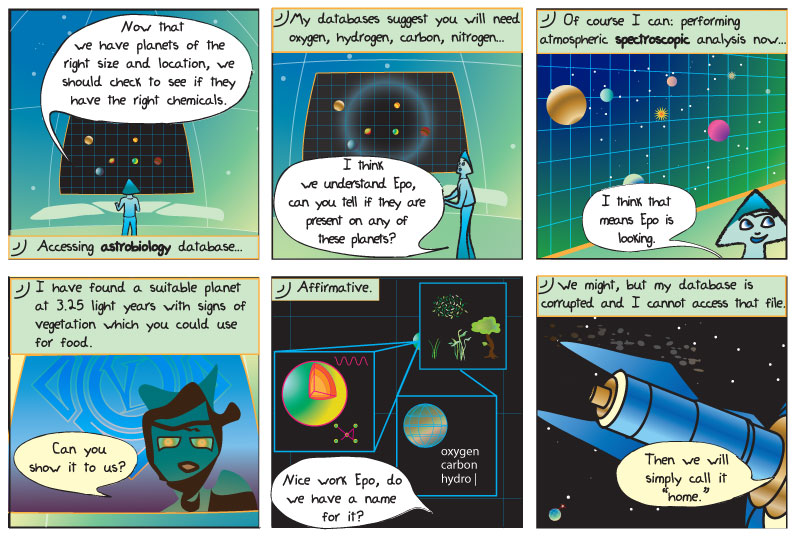
Comic Transcripts
Panel 1.
Alkina: Now that we have planets of the right size and location we should check to see if they have the right chemicals.
Epo: Accessing astrobiology database.
Panel 2.
Epo: My databases suggest you will need oxygen, hydrogen, carbon, nitrogen…
Alkina: I think we understand Epo, can you tell if they are present on any of these planets?
Panel 3.
Epo: Of course I can: Performing atmospheric spectroscopic analysis now.
Alkina: I think means Epo is looking.
Panel 4.
Epo: I have found a suitable planet 3.25 light years with signs of vegetation which you could use for food.
Captian Ishian: Can you show it to us?
Panel 5.
Epo: Affirmative.
Alkina: Nice work Epo, do we have a name for it?
Panel 6.
Epo: We might, but my database is corrupted and I cannot access that file.
Captian Ishian: Then we will simply call it “Home”.
What does it mean?
Spectroscopy – is the scientific technique in which the intensity of light at different colors or wavelengths is measured. Comparing the measurements at different wavelengths can help to determine which elements are present in the light source.
Astrobiology – is the science that tries to answer questions like: how do living organism originate? Is there life out in space, and what form does it have? What is the future for life on Earth and beyond?
In human speak please!
Extrasolar atmospheres are even harder to detect than the planets themselves. On occasion, however, the planet may cross in front of its host star, and a very small amount of light from the star can be filtered through the planet’s atmosphere. This light can be analyzed through a process called spectroscopy to find out the composition of the planet’s atmosphere.
Is that all?
Alien Worlds – interactive exoplanet activities from NASA.
Explore Exoplanets – a multimedia-rich news and information hub from NASA’s Exoplanet Exploration Program.
